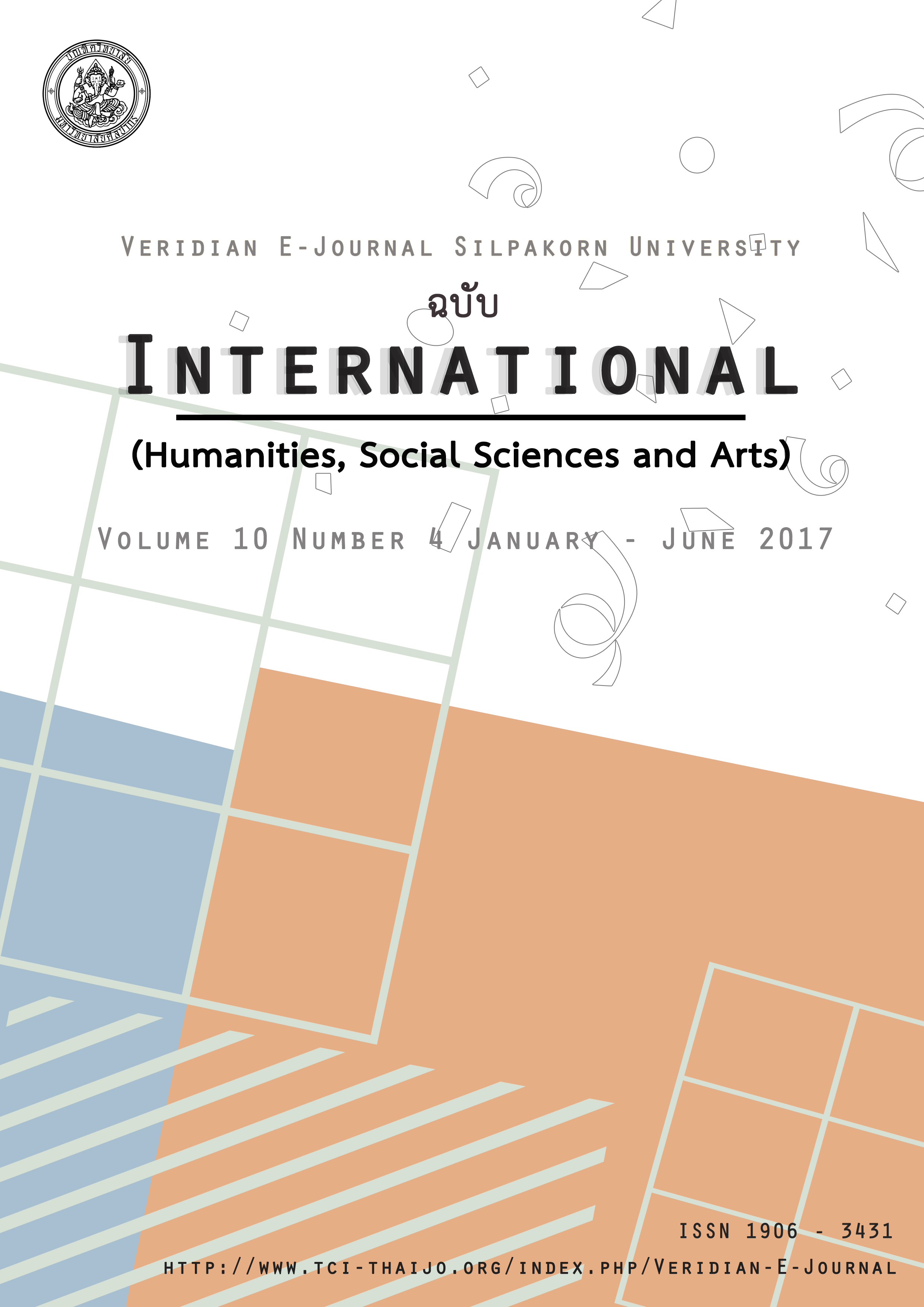A pattern of the sustainable tourism border town management in local government for supporting the ASEAN Economic Community
Main Article Content
Abstract
This study was the qualitative research which has objectives as following; (1) to study the problems and barriers of the existing policies, laws and regulations of the land use management in the tourism border towns (2) to study the availability of the local administrations in the tourism border towns through the land use Management in order to support the ASEAN Economics Community (3) to study about the pattern of the sustainable tourism border town management in local government for supporting the ASEAN Economic Community. The research instrument was interview and focus group of the local residents’ representatives, the local administrations, private organizations and civil society sector.
The result of the study presented that the problems and barriers of the existing policies, laws and regulations of the land use management in the tourism border towns. The core of each land use management law of Thailand which most of them mainly aim to the agricultural purposes. Besides, the operational authority of the local administrations was responsible in the land use management based on the law provided such as the Act Promulgating the Land Code, B.E. 2497(1954), the Enhancement and Conservation of National Environmental Quality Act B.E. 2535 (1992) and the Town and Country Planning Act 2518 (1975). It can be analyzed that the limitation of those laws is exhibited. The land use management based on the Town and Country Planning Act 2518(1975) can probably be the most effective option. However, the local administrative staff still have difficulties in their job because of their roles and authority.
Therefore, this study proposes the pattern of the sustainable land management in the tourist border towns in the local level in order to support the ASEAN Economics Community which is divided into the short, intermediated and long-term of sustainable land management patterns as follows; 1) the short-term of sustainable land management pattern is that the potential of the tourism border town should clearly be studied, and the locals should be cooperative to manage the residential, industrial and agricultural zoning development based on the potential of each area. Also all local sectors, especially the civil society, should be cooperative in the land use management in their area and the locals should be educated about the ASEAN Economics Community. 2) The intermediate-term of sustainable land management pattern is to prepare the locals for building up teams with the knowledge of urban development. The directions of the urban development also should be informed clearly to the public, government agencies, educational institutions, private institutions and investors. And 3) the long-term of sustainable land management pattern is that the responsibility of land use management by the local administrations under the Town and Country Planning Act should be added as a part of the municipal development plan. This can promote an integrated development plan covering the physical, social and economic aspects.

